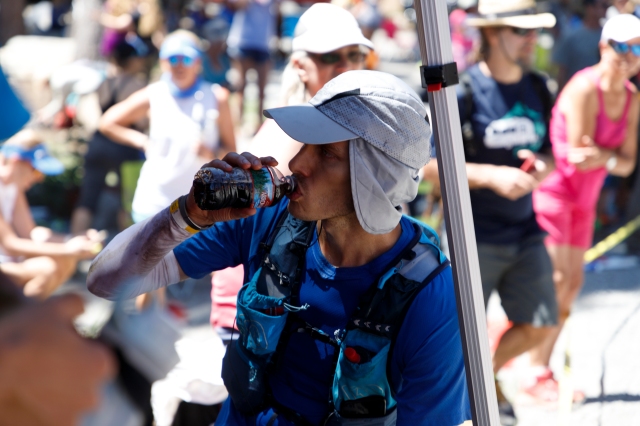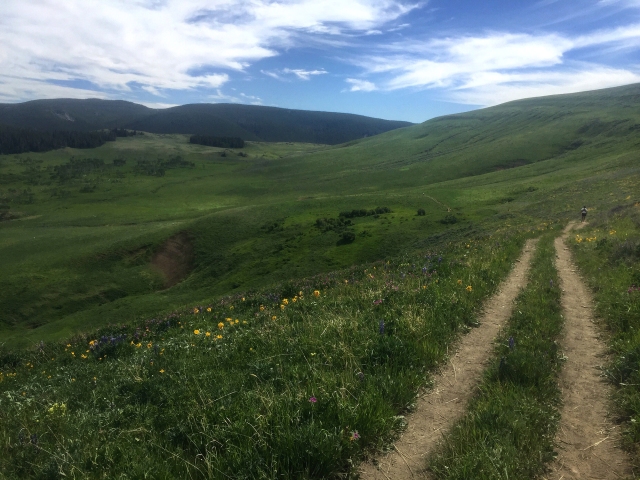There are two outstanding watches on the market, but currently, there are no perfect one-wrist solutions.
Six days a week, I have taken to wearing both the Apple Watch and the Garmin Fenix 5X Plus. At the same time. I have become that person. (The seventh day is a rest day.)
Last month I upgraded my running watch to the Fenix 5X Plus. I have been a loyal Apple Watch user since its launch in 2015, but the new Fenix series made me question my continued dedication to the Apple Watch.
First off, there is the feeling that I am managing the device and ecosystems. It is more than just trading hardware; coming home from work and putting my Apple Watch on the charger and strap on my running watch.
It is the software behind the devices.
Both watches are great activity trackers on their own. Each is capable of capturing heart rate, steps, floors climbed, heart rate variability, and encouraging you to stand. Really, the most significant difference is Garmin provides an integrated sleep tracker whereas there are currently only third-party apps are available to track sleep for the Apple Watch.
The issues come when I have tried to use watches at the same time.
While Apple’s Health app will use Garmin data as a source, it doesn’t do it well. For instance, while I have Garmin as a source for steps, steps never seem to sync between Garmin and my Apple Health app. Also, the only hours that count toward the Apple Activity app’s hourly stand goals are the ones during an activity in which I was recording a workout on the Fenix. And obviously, the Garmin Fenix is only monitoring data while I am running.
This fall, Sara and I are running the Moab 240. Training for this kind of race becomes a lifestyle in the months leading up to the start. With that in mind, I like the idea of having an activity tracker that tracks everything. An extra bit of feedback to highlight fluctuations in sleep, heart rate, weight, and anything else I can over analyze
Everything. All in the same device, all in the same ecosystem.
But the Apple Watch cannot be my single solution. According to Apple, the Series 3 battery will last five hours while using the GPS without connected to a phone. That battery performance is impressive but was limited for the type of training we will be doing in preparation for Moab. Also, there currently isn’t a way to integrate the Apple Watch with the Training Peaks service. Training Peaks pulls our data from Garmin (plus many other devices) and provides it to our coach. Currently, Training Peaks does not offer an Apple Watch app.
So when Garmin released the Fenix 5 Plus series, I was drawn to the idea of wearing just one device.
The naming convention for the newest iteration Garmin Fenix line implies that it is a modest update. But, the Fenix 5s/5/5X Plus series packs some pretty significant updates including:
- Access to the new Galileo satellite system
- 16 gigs of downloaded regional maps
- The ability to download music to the watch
And specific to the 5X Plus edition:
- 32 hours of battery life
- The addition of a Pulse Ox sensor
DC Rainmaker has an excellent review of the device.
I wore the watch for a week trying out my one-watch solution. And while the Fenix 5X Plus is a powerhouse, I had a couple of issues with using this watch as an every-day watch and I missed too many features from the Apple Watch.
First — my biggest issue with Garmin Fenix 5X Plus — is it’s just too big for office attire. I couldn’t stand the way that my button down shirts hung unevenly on my left hand. While I may have been the only one who noticed it, It made me feel unprofessional and self conscious.
Second, Garmin’s current music solution feels very 2005. You can download songs you currently own via the Garmin Connect app through your computer. Or you can add a premium subscription to iHeartRadio and download songs over WiFi. In the future, other streaming music providers may provide an app, but those are currently your only options.
 I signed up for a trial subscription with iHeartRadio and tried out the second solution. It was painful — indicating my 200 Mbps download speeds were too slow — but it eventually worked. Once downloaded, the experience of running with just the watch and listening to music over Bluetooth headphones was freeing. This is especially true during speed workouts. But the process of downloading songs is just too clunky. Also, I would only have iHeartRadio for use on the watch. This defeats many of the benefits of having a music subscription service that gets more personalized as you use it.
I signed up for a trial subscription with iHeartRadio and tried out the second solution. It was painful — indicating my 200 Mbps download speeds were too slow — but it eventually worked. Once downloaded, the experience of running with just the watch and listening to music over Bluetooth headphones was freeing. This is especially true during speed workouts. But the process of downloading songs is just too clunky. Also, I would only have iHeartRadio for use on the watch. This defeats many of the benefits of having a music subscription service that gets more personalized as you use it.
Deezer has announced they will be providing support for Garmin devices soon. At this time, Spotify has not announced support for any Garmin devices. If you’d like to show your support for Spotify developing Garmin support, Spotify does have a site where you can vote on this feature.
Going without the Apple Watch for a week also made me appreciate just how much I use it and the ever-present Siri. Without it, I didn’t have a way to add things to my Reminders list when my phone wasn’t nearby. I’m also apparently used to rotating the crown of the watch to adjust the volume of the podcast or music I am listening to. And the watch is just fantastic at allowing me to check my messages and provide a quick response.
So, about the two watch thing.
After experiencing the freedom of not carrying a phone while using the Fenix, I started wearing both watches and leaving my phone at home during the weekday runs. I can stream music to my headphones over my Apple Watch Series 3. Using Siri to change the playlist or artist is the coolest thing since Kris Kross. During a hot and challenging speed workout last week, I even turned up my air conditioner so the house would be nice and chilly when I got home. And It also gives me comfort knowing that Sara can call or text me if she needs me. All without my phone.
Also, this means that other than when I am charging the Apple Watch, I now have an all-day activity tracker. I just also look a little bit like a dork part of the day, and I’m ok with that.











